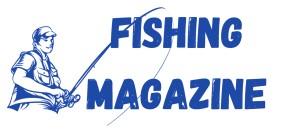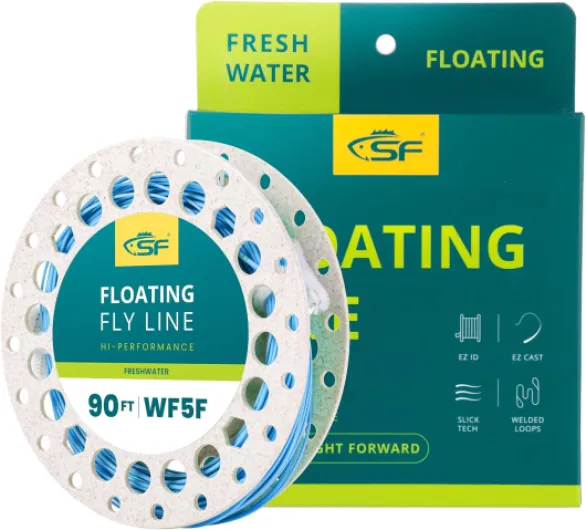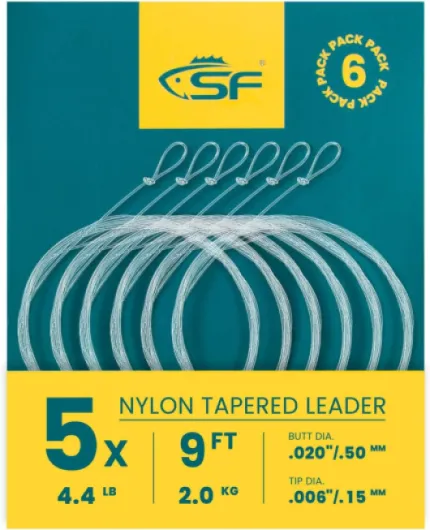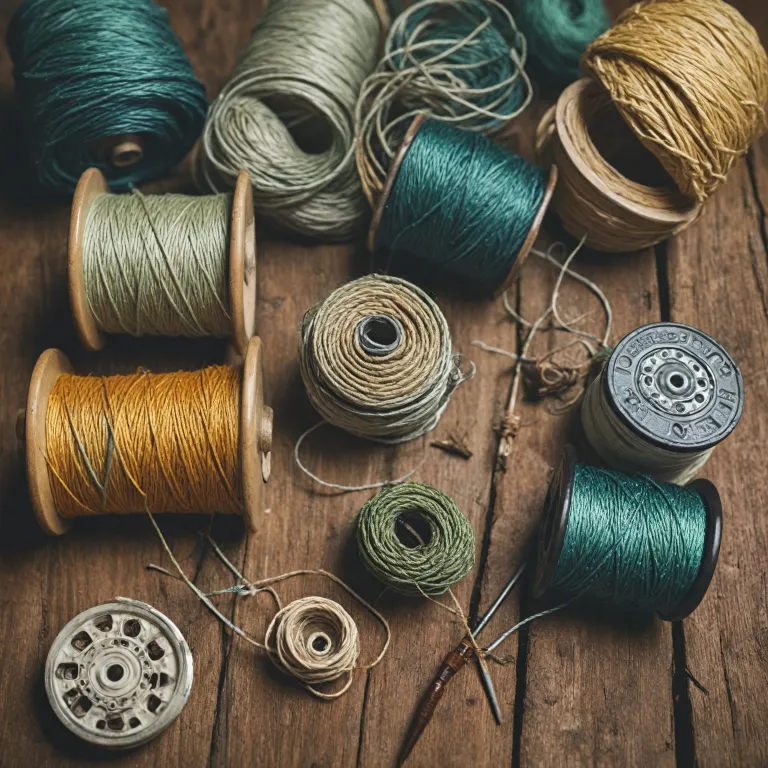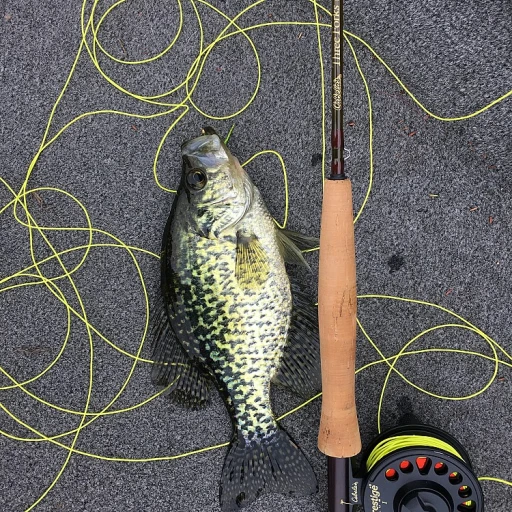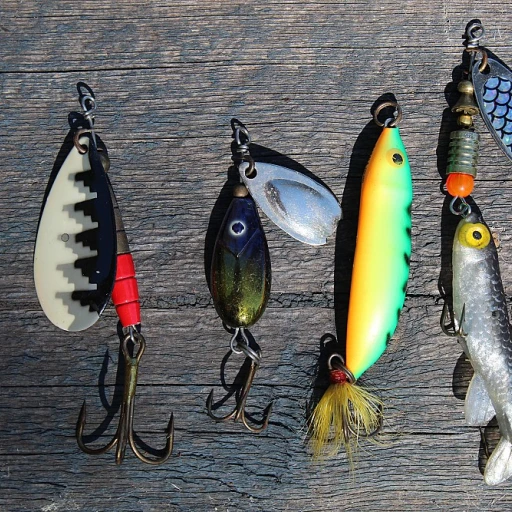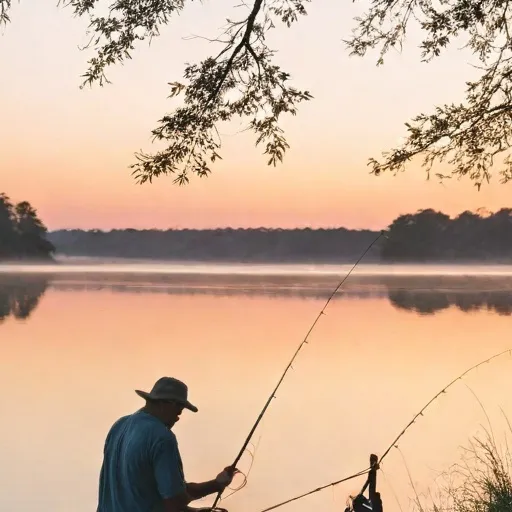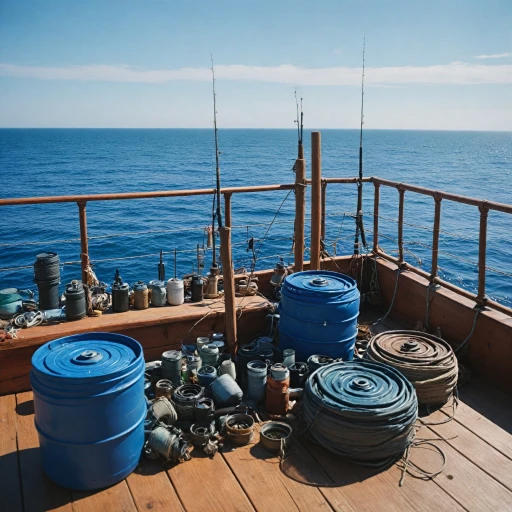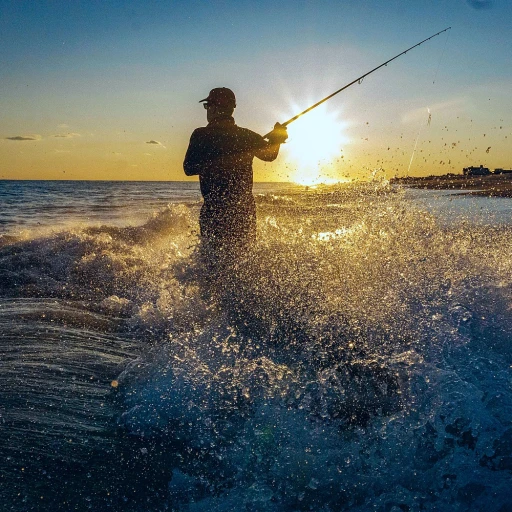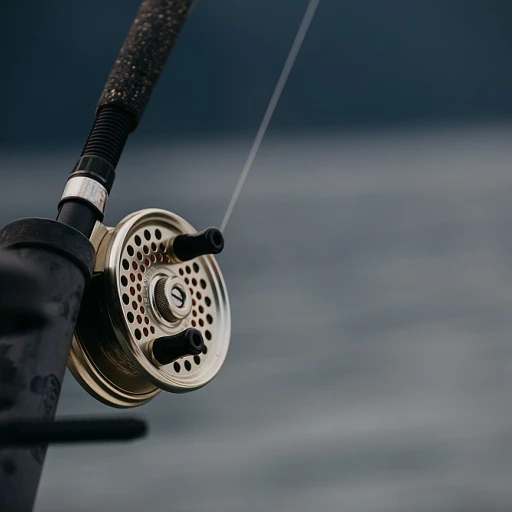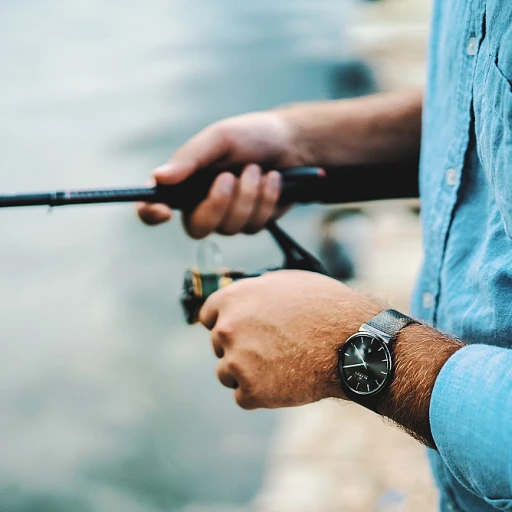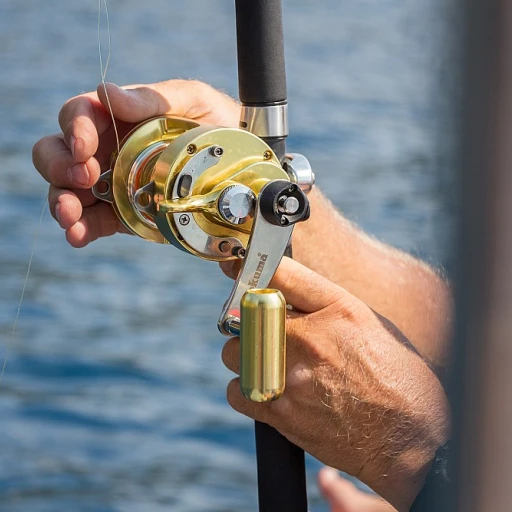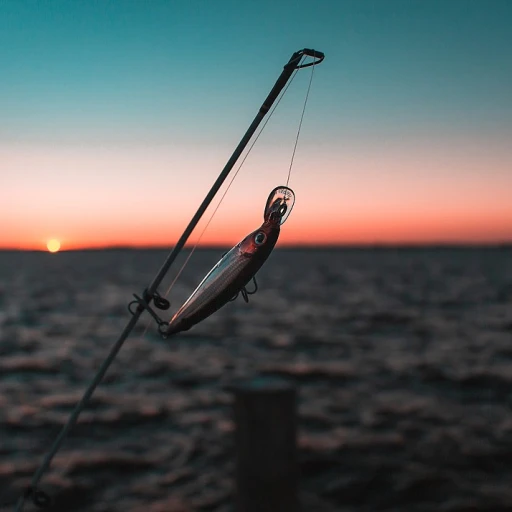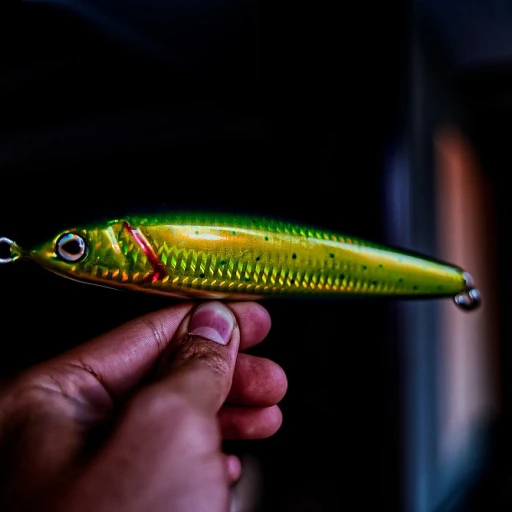
The Basics of Fly Line
Grasping the Key Elements
Fly fishing is a unique and rewarding experience that many anglers cherish. At its core, the fly line plays a pivotal role in determining how effective your fishing endeavors will be. Understanding the fly line's basics can help you make informed decisions that elevate your freshwater fishing adventures.
Fly lines are not one-size-fits-all. They are meticulously designed to serve different purposes in various fishing environments. The type and weight of the fly line can significantly influence your fishing success. Fly lines are often categorized by their weight, with heavier lines being used for larger fish like trout or for situations where a clear understanding of fly fishing combos is essential.
In addition to weight, you'll find different tapers used in fly lines. For instance, a double taper line offers a balanced feel which can be beneficial for delicate presentations, like when you're casting dry flies. Meanwhile, specialty lines such as full sinking or intermediate sinking lines are tailored for specific techniques. For example, a specialized euro nymph line can improve your catch rate with trout in certain freshwater conditions.
It's also crucial to consider innovations like magnitude textured lines. These have been designed to enhance distance, improve casting efficiency, and provide a smoother experience by reducing friction. Whether you're chasing after salmon steelhead with a shooting line or aiming for the grand slam in warm waters, the texture can make a noticeable difference.
Choosing the right fly line also means considering its purpose. If you're new to fly fishing or looking to refine your approach, understanding the variety of lines available and their applications is essential. Fortunately, with options like textured infinity or full clear fly lines, anglers have a broad selection tailored to their specific fishing needs.
Types of Fly Line
Diverse Fly Lines to Enhance Your Fishing Experience
When delving into the world of fly fishing, understanding the various types of fly lines available can significantly elevate your angling experience. Every type comes with its specific advantages and is suited to different environments and fish species.- Weight Forward and Double Taper Fly Lines: Weight Forward (WF) lines are a favorite among many anglers due to their design that promotes easier casting over longer distances. The majority of your fly fishing will likely involve using WF lines, especially when targeting trout and salmon steelhead. On the other hand, the Double Taper (DT) line is known for its precision in casting and mending, making it an excellent choice for dry flies in calmer waters.
- Floating and Sinking Lines: Choosing between floating and sinking lines depends largely on your fishing strategy and the fish you’re targeting. Full floating lines are optimal for dry fly fishing. Contrastingly, sinking lines, such as full sinking and intermediate variations, allow your fly to reach fish that dwell deeper. Many experienced fishers recommend the textured infinity clear line for its effectiveness in discrete fish movement.
- Specialized Lines for Specific Techniques: For Euro Nymph fishing, anglers often opt for specialized lines designed to present nymphs close to the riverbed with precision. Streamer fishing enthusiasts may appreciate the aggressive taper of certain lines that enable a swift presentation.
- Special Application Lines: Beyond traditional freshwater fly fishing, specific lines are tailored for more unique techniques or targets. The magnitude textured lines offer enhanced control, while infinity clear fly lines can be ideal for crystal-clear waters. The full clear fly line caters to situations where utmost stealth is essential to prevent spooking fish.
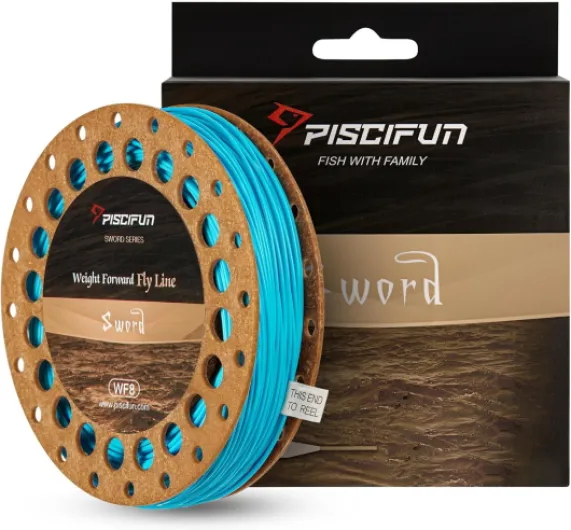
- + Weight Forward design for easy casting
- + Multiple weights available (WF1 to WF10)
- + Available in 90 and 100 feet lengths
- + Features a welded loop for easy rigging
- + Floating line suitable for various conditions
Choosing the Right Fly Line for Your Needs
Finding the Perfect Fly Line for Your Angling Requirements
Choosing the right fly line is a critical aspect of your fly fishing experience. With a multitude of options available, making the right choice can seem overwhelming. Consider these important factors when selecting your fly line:- Line Weight and Type: Line weight is crucial as it should match your fly rod and reel for optimal performance. For those targeting trout in freshwater streams, a lighter line weight might be preferable, while a salmon steelhead outing may require a heavier line. Lines also come in various types, such as floating, intermediate, and full sinking. Choose according to whether you're casting dry flies or streamers.
- Taper Design: The taper of a fly line, whether it's a double taper or weight forward, significantly impacts casting. Double tapers are great for gentle presentations and roll casts, while weight forward lines are beneficial for long-distance casting and windy conditions.
- Specialized Lines: Consider specialty lines based on your fishing needs, such as textured infinity or clear fly lines. Texture affects performance and can enhance casting distance, handling, and hook setting. Infinity clear lines provide stealth by being less visible in clear waters, making them ideal for cautious fish.
- Fishing Environment: If you're venturing into freshwater fly fishing or targeting saltwater species, ensure to use lines designed for those specific environments. Freshwater lines differ from those that can withstand the harsh conditions of saltwater fishing.
- Innovative Features: Modern lines offer various innovations to improve your fishing success. Magnitude textured lines, for example, add casting power and versatility, which can be a great addition to your toolkit.
Fly Line Maintenance and Care
Maintaining Your Fly Fishing Investment
Proper maintenance and care of your fly line can be the difference between a successful day on the water and a frustrating one. While choosing the right type of fly line for specific fishing scenarios, such as freshwater fly fishing or targeting species like trout or salmon steelhead, holds great importance, equally vital is ensuring your fly line lasts longer and performs optimally.- Cleaning Your Fly Line: After each fishing trip, especially in freshwater environments, it's important to remove dirt, algae, and other residues. Use a soft cloth with lukewarm water to gently clean the line. This maintains the line's texture and prevents it from becoming brittle or cracking.
- Storage Considerations: Avoid exposing your fly line to direct sunlight for prolonged periods, as UV rays can degrade its material over time. Once dry, store the line loosely coiled in a cool, dark place, preferably with a loop through which a rod's guide can pass.
- Application of Fly Line Dressing: Consider using a suitable fly line dressing, which can restore the line's slickness, aiding in its casting and floating abilities. This is particularly beneficial for textured lines and those used with dry flies or euro nymph setups.
- Checking for Wear and Tear: Regularly inspect your fly line for signs of damage such as nicks or cuts. For those using types like double taper, full sinking, or shooting lines, ensure that any damage is addressed immediately to avoid setbacks when you're out fishing.
- Use of Fly Reel Backing: Make sure to spool your fly lines with the necessary backing on your fly reel, to help distribute pressure evenly and extend the longevity of both the reel and the line.
Innovations in Fly Line Technology
Advancements in Fly Line Crafting
Fly lines have seen a remarkable evolution, enhancing every fly fishing experience with modern innovations designed to cater to specific needs. These advancements bring a whole new magnitude of performance to the water.- Textured Fly Lines: The introduction of textured fly lines, such as the magnitude textured and textured infinity, provides added benefits like reduced friction. This innovation aids in longer casts and better floatation, which can be crucial when targeting trout with dry flies. The right textured line can greatly influence your overall fishing success.
- Casting Innovations: Whether you're using a shooting line or a double taper, advancements in line technology offer greater precision and efficiency in casts. Shooting lines help maximize distance, ideal for euro nymph or streamer fishing in larger rivers.
- Sinking Technologies: Sinking fly lines, including the full sinking and intermediate types, are now designed to sink at various rates tailored for specific fish species like salmon steelhead or trout. These advanced fly lines enable anglers to reach deeper parts of the water column, maximizing their chances of success.
- Clear Fly Lines: The innovation of clear fly lines, such as the full clear and infinity clear models, provides stealth in freshwater fly fishing. They are crafted to lure fish without the distraction of visible lines, offering a clear advantage in shallow waters.
- Enhanced Durability and Maintenance: Modern lines are engineered with materials that increase longevity and ease of maintenance. Regular cleaning and proper spooling with line backing on your fly reel are still crucial, but today's lines maintain their integrity much longer.
Common Mistakes and How to Avoid Them
Avoiding Pitfalls for a Seamless Fly Fishing Experience
As you navigate the world of fly fishing, steering clear of common mistakes can amplify your success on the water. Recognizing these missteps will help you utilize your fly line to its fullest potential and enhance your overall fishing experience.
One frequent error anglers make is selecting the wrong line weight for their targeted fish species, often overlooking the unique requirements of different fish like trout or salmon steelhead. Aligning your fly line with fish expectations can make a world of difference, allowing you to master techniques such as casting dry flies or employing a shooting line for longer distances.
The importance of your line’s texture and type cannot be overstated. Failing to choose between options like magnitude textured and full sinking lines can lead to inadequate performance, depending on conditions. Think carefully about the type of water—are you dealing with clear fly fishing in freshwater or targeting depth with a sink fly during your fishing session?
In terms of maintenance, not taking the time to remove debris or clean your fly line after use significantly impacts its longevity. Establishing a regular care routine is crucial, given the magnitude of use some anglers demand from their equipment.
Misjudging the right type of backing ensures frequent disruptions, especially during intense catches. Make sure your line backing is suitable, particularly when a grand slam catch might very well require the flexibility of a double taper line.
Finally, not understanding the nuances of line taper affects fly casting precision, pushing the need to adapt with innovations like the textured infinity that contributes to superior casting ability. Untangling from common errors not only leads to a more rewarding fly fishing journey but also sets you on a path to becoming a savvy fisherman.
